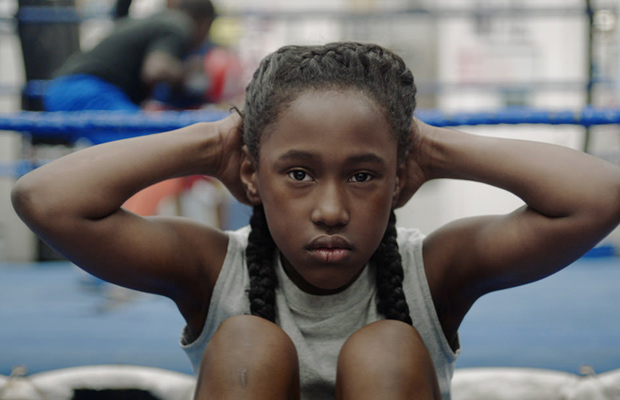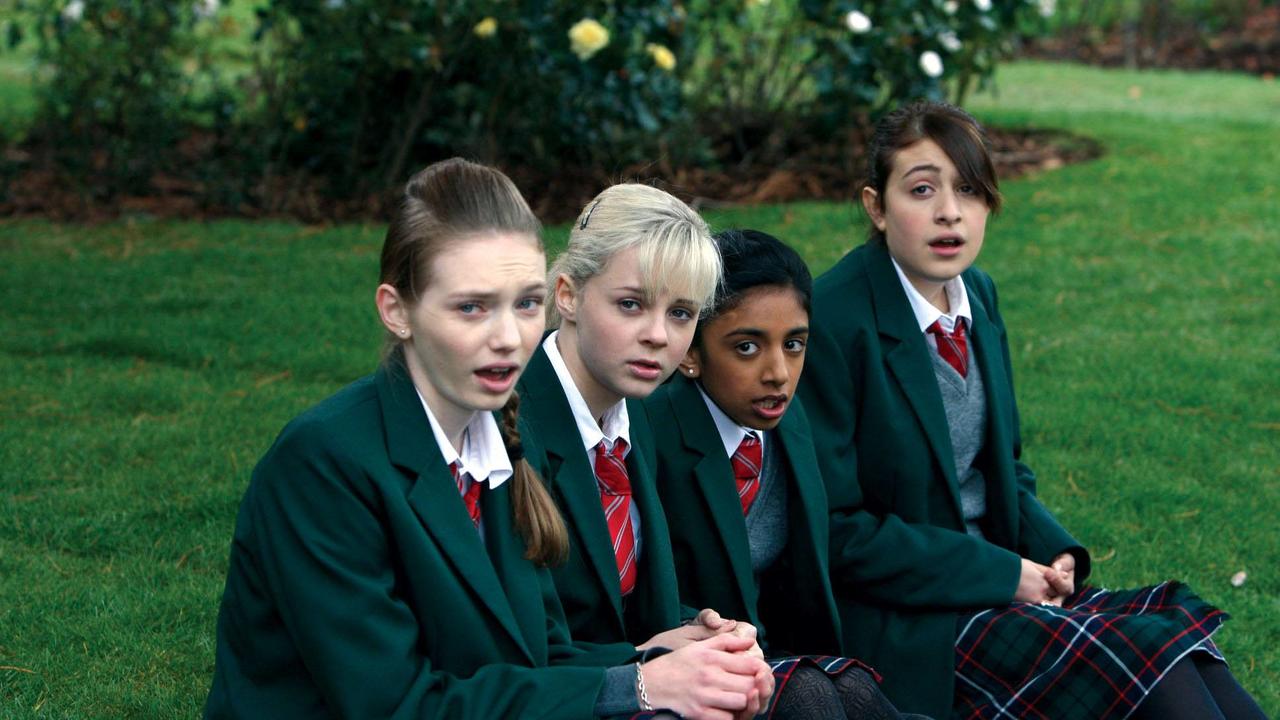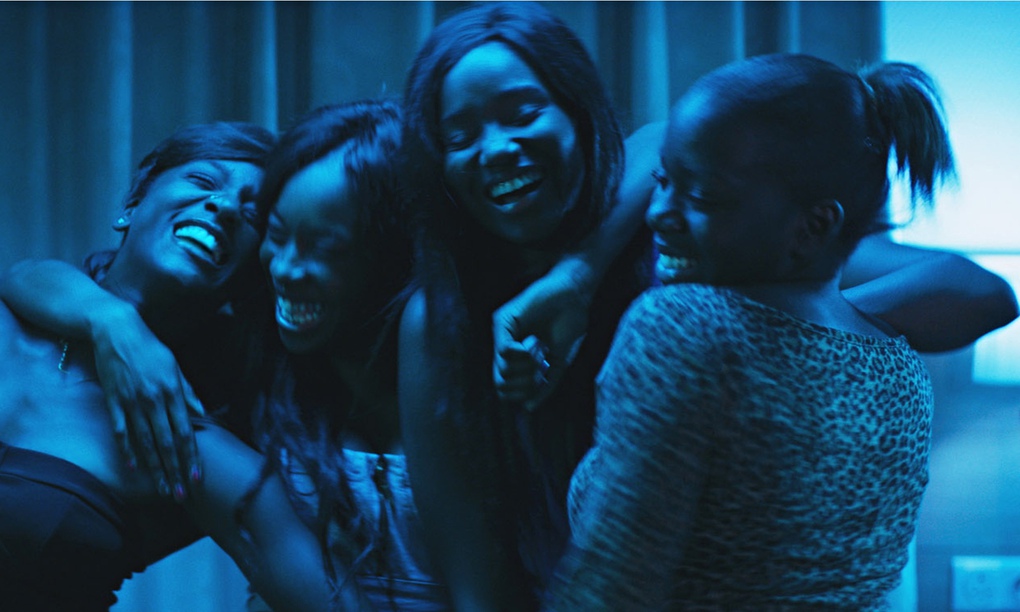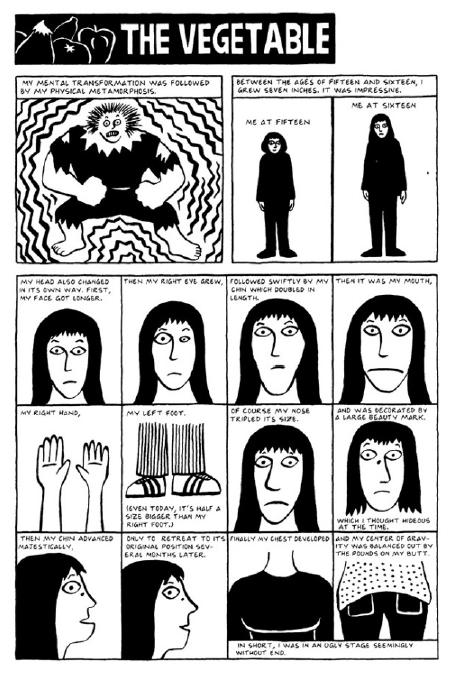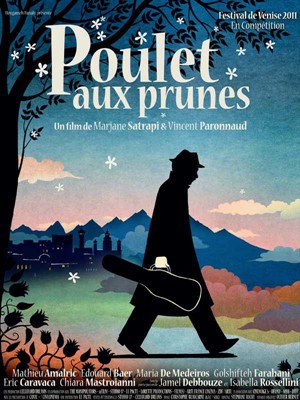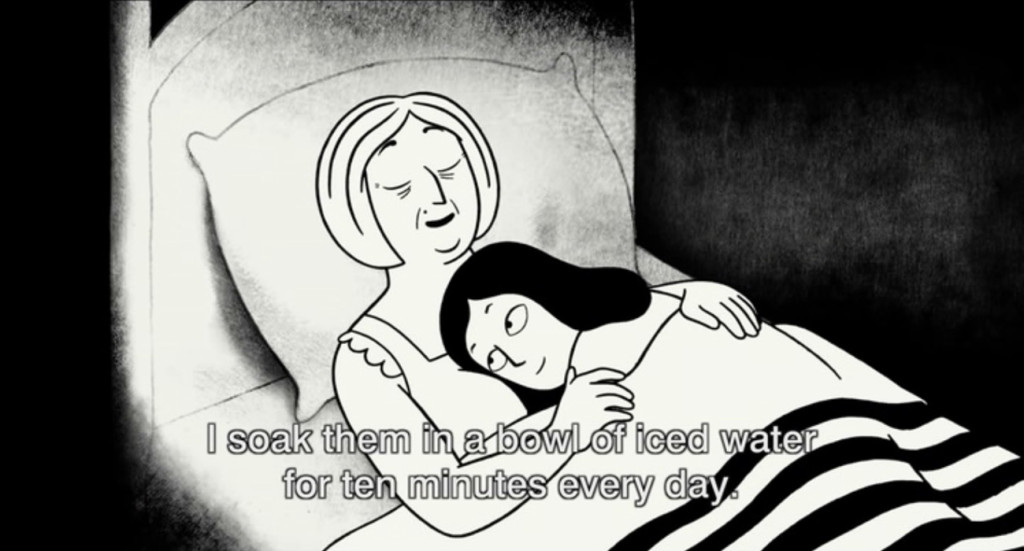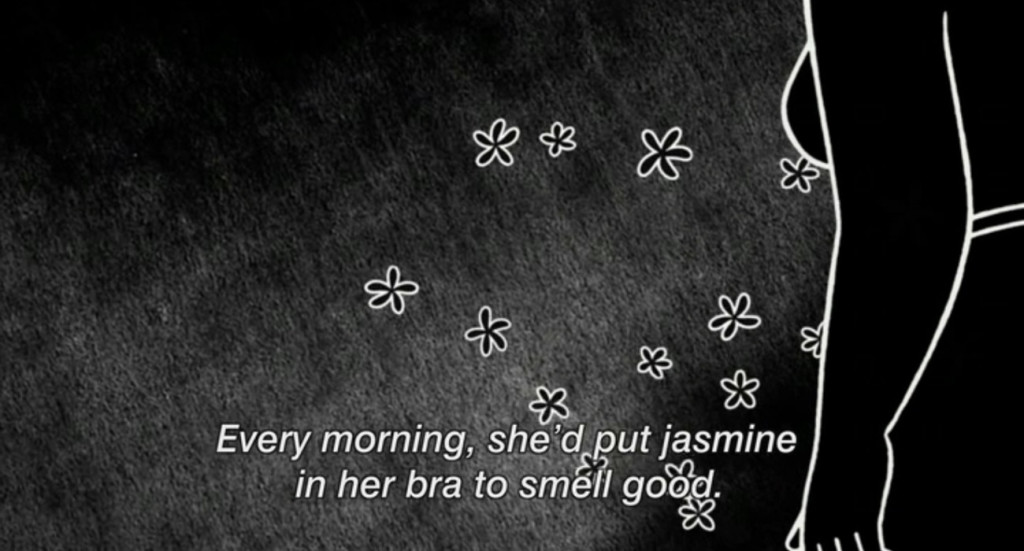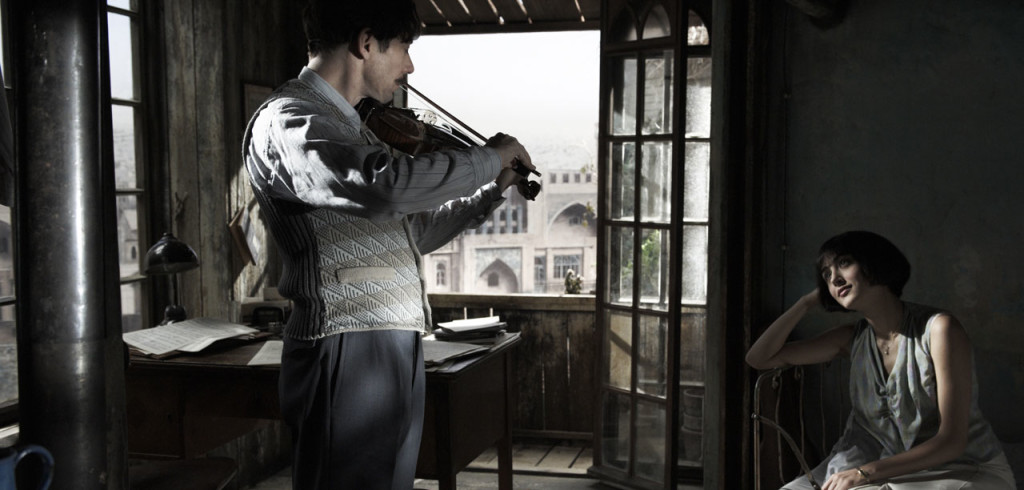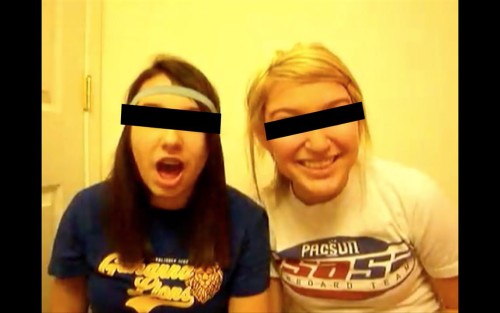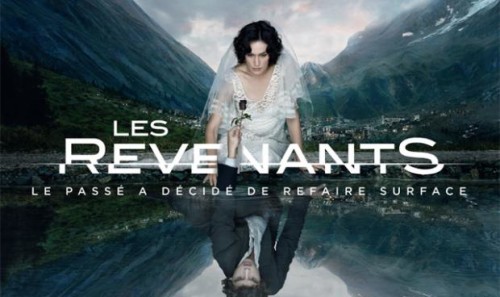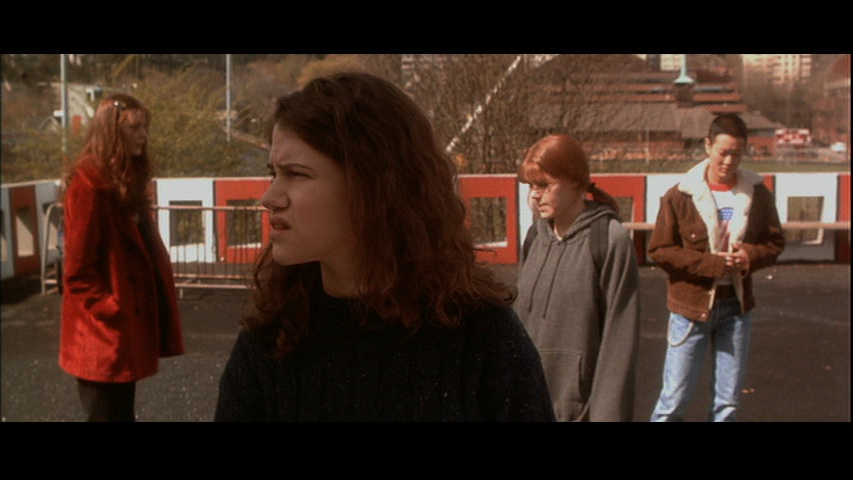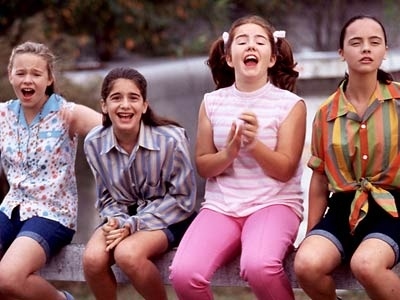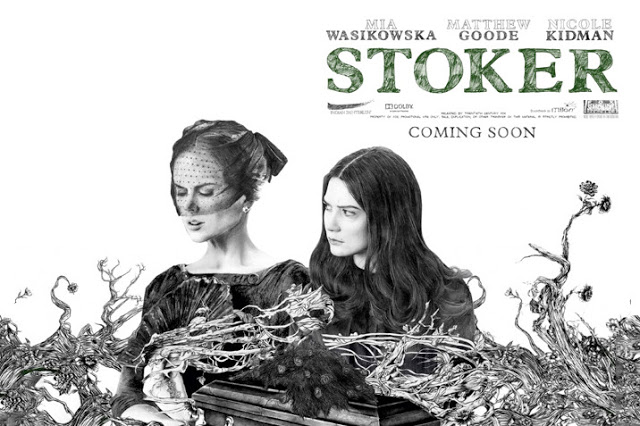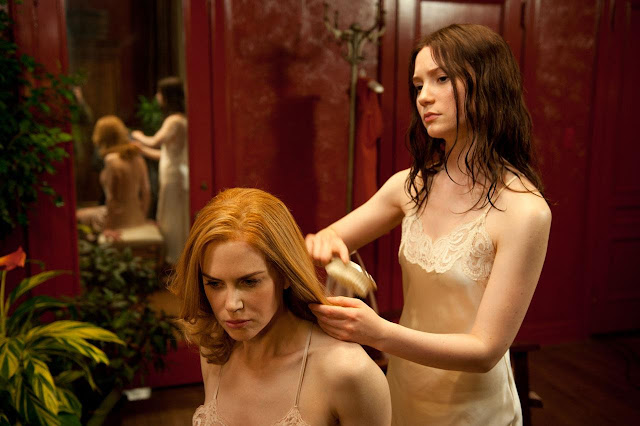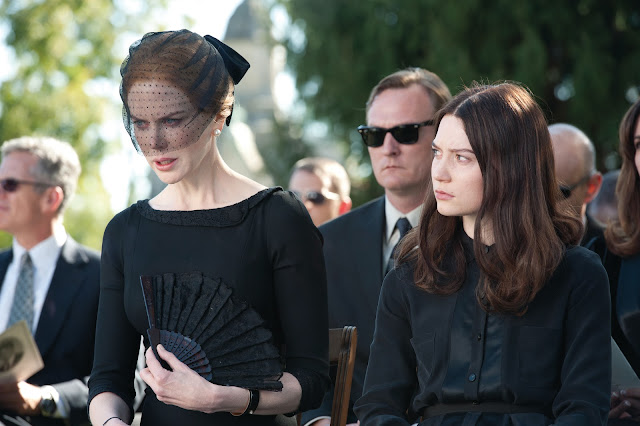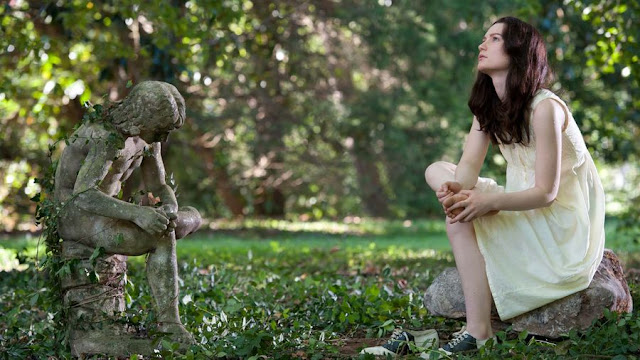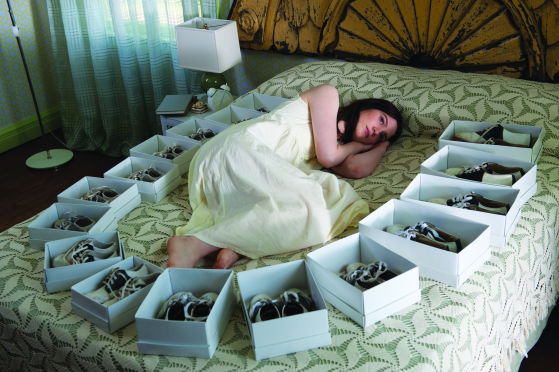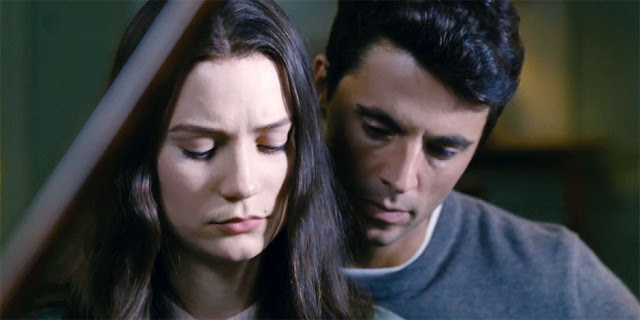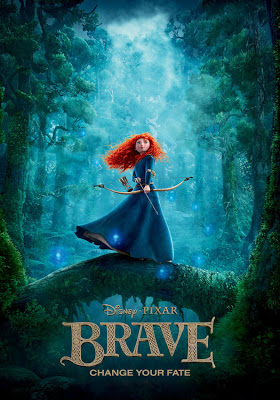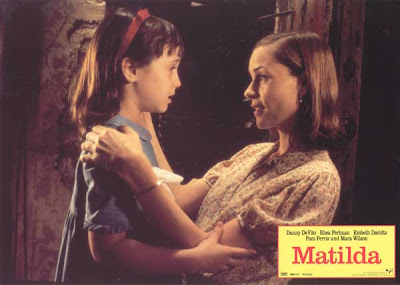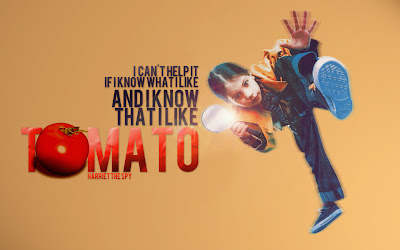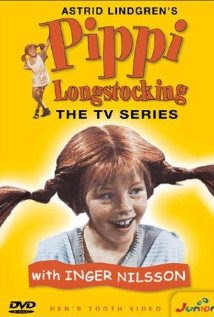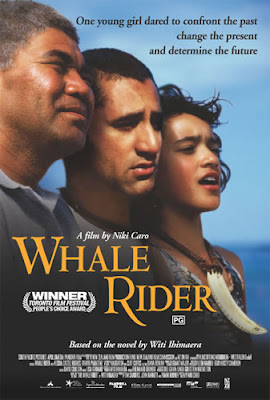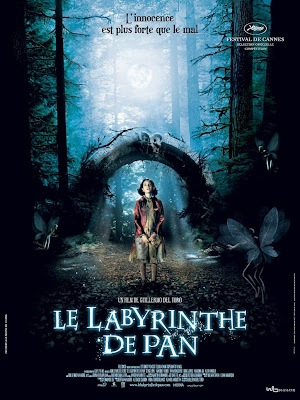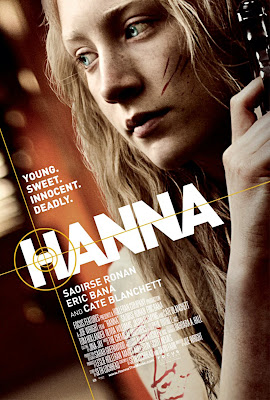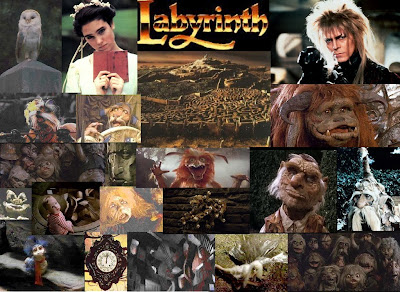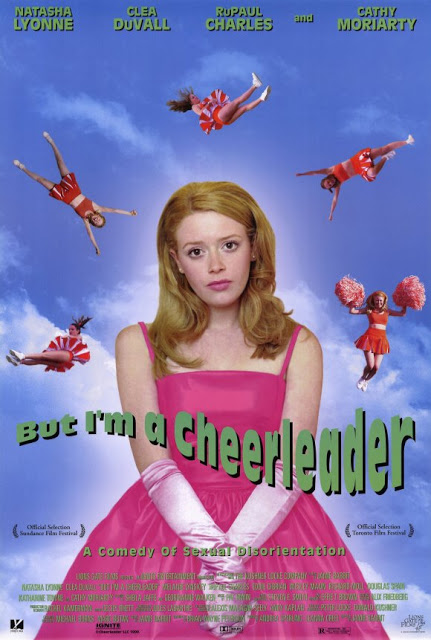
This guest post written by Charline Jao appears as part of our theme week on Women Directors.
French director and screenwriter Céline Sciamma of Water Lilies, Tomboy, and Girlhood has gained critical acclaim for her portrayals of adolescence and coming-of-age, particularly on themes of gender and sexuality. Sciamma’s movies are intimate character studies, punctuated with dancing, tiny details embedded in body language, and a serious respect for younger viewers. For all the cringe-worthy or mediocre child acting that permeates film, Sciamma has a remarkable ability to draw out nuanced and organic performances in her works, oftentimes from non-actors.
I’ve never met a single person who ascribed to the idea that high school is supposed to be the best time of your life, yet the romanticization of youth persists in so much of our media. While childhood is often seen through nostalgia goggles, the reality is that adolescence is a confusing and horrifying time, defined in many western cultures as liminal. Liminality refers to the ambiguous space in between social structures — something Britney Spears famously pinpoints in her 2001 hit “I’m Not a Girl, Net Yet a Woman.” The adolescent or teenager sits on the threshold of adulthood by sitting between child and adult, figuring out their rites of passage and space within society. This undefined, yet crucial space is an uncomfortable one and Sciamma’s films excel because they embrace the chaotic ambiguity of youthful liminality.
In Tomboy, we see a 10-year-old move into a neighborhood and introduce themselves as Mickaël (Zoé Héran) in front of their new friends. This quickly develops into a double life, as we learn their family sees them as their elder daughter Laure — a tomboy with short hair. Through interactions with the neighborhood boys and their girlfriend Lisa (Jeanne Disson), we see how children as young as six already recognize and enforce notions of gender. Girls don’t get to play soccer. Boys are strong defenders. Mickaël at 10 already understands that being a tomboy (garçon manqué in French, which means failed boy) is acceptable, but being a boy without a penis is something shameful and unspeakable. Similarly, the local boys know that when that transgression occurs, they’re within bounds to reject and attack their supposed friend.

Sciamma never shies away from the very real threats young people face. Maybe it’s a kind of discomfort with childhood curiosity of “mature” ideas (with LGBTQ+ themes being unfairly treated as more mature), but Sciamma’s films make one realize how rare this is in much of our mainstream media. Sexuality, violence, and depression are all things we want to separate from children who are pure, uncorrupted, and need to be protected. When film and television do venture into the dark side of growing up, it’s often in the form of a soapy after-school special. This not only feels dishonest, it feels like a disservice.
Children under the age of 18 years old experiment, they deal with depression, and suicide is the third-leading cause of death for that age demographic. My Life as a Zucchini, which Sciamma worked on as screenwriter, is a strong example of a film dealing with difficult issues as the film follows a group of foster children, each of whom has a differently tragic background: abuse, drug use, alcoholism, violence, etc. In Tomboy, when Mickaël’s mother (Sophie Cattani) angrily forces them into a blue dress, we’re meant to understand — in addition to misgendering them — how humiliating that is and acknowledge that childhood problems some might perceive as “bumps in the road” actually have very, very high stakes.
At the same time, the physical and non-physical violence directed towards these characters are not their defining factors. When portraying characters outside the straight, cis, or white archetype, there’s a very real danger of turning people into spectacles or tropes. Poor, marginalized, or under-portrayed individuals turn into tragedy porn meant for rich consumption, or become patronizing PSAs that unintentionally other these characters. There’s a troubling emphasis on the reactions of those around the marginalized, instead of the actual figure. When faced with trials and tribulations, Sciamma’s characters express themselves in all kinds of ways without turning gratuitous or voyeuristic. While Hollywood loves the emotional outburst that builds over several acts, we know everyone deals with grief and frustration differently. Maybe it’s the simple act of regressing and sucking one’s thumb as in Tomboy, the persistent clinking of a plate in Zucchini, or just falling silent. The attention to detail in body language, lingering stares, and looks resist the idea that there is a singular female, LGBTQ, or young rite of passage.

Girlhood is another story that could have easily gone terribly awry in the hands of a different director. Along with its critical acclaim, the film has been simultaneously praised for centering Black girls as well as criticized as “a story of black femininity being presented via a white feminist gaze.” The film follows Marieme (Karidja Touré), a Black teenager from a difficult background, as she finds a community among three other girls and discovers a new world of fights, boys, and music. Like Tomboy, we vividly see structural and physical violence: adults tell Marieme she’s a lost cause and she has an abusive family life. However, there’s always an equal amount of joy and camaraderie in in Sciamma’s films, which she often illustrates through dance. One of Girlhood‘s most memorable scenes features the group of girls in a hotel room dancing along to Rihanna’s “Diamonds.” In Tomboy, Lisa dances with Mickaël in her room. In My Life as a Zucchini, the many foster children have a dance party during a vacation in the mountains. There’s plenty more — inside jokes, sports, and snow fights — but these dramatic, musical moments assert that childhood is not all darkness. After all, a movie about children that fixates only on the tragic isn’t only unrealistic, it leaves little room for hope. There’s an element of uncertainty in Girlhood‘s ending, to which Sciamma told Indiewire, “I think I’m making movies that ask questions and that make you care for the character. I think that’s more powerful than actually knowing they’ll be alright.”
Tomboy similarly omits any definitive language regarding Mickaël — they don’t plan to live this double life in advance, it just happens. Their exact gender identity is left somewhat ambiguous because it’s possible Mickaël is still figuring things out, and they might not yet have the vocabulary for words like transgender, genderqueer, non-binary, or misgendering. While narratively it allows for a small twist, it’s notable that the first time we hear our protagonist’s name is when they introduce themselves to Lisa — and the viewer — as Mickaël. At the film’s conclusion, when they call themselves Laure, it’s unclear whether this is an act of defeated conformity or a reconciliation of the double life. Very much in line with Sciamma’s statement on Girlhood, we “can’t leave the film in the room.” Instead, “you have to take it back home with you.”
There’s valid criticism of Tomboy’s refusal to name Mickaël as a trans boy, but there’s also a strength in how the film doesn’t push them to explain or justify themselves. We don’t know where Mickaël — or Laure — will end up and it’s likely they’ll grapple with much more in the future. Tomboy explores gender-policing through child characters and refuses to tie things up neatly at the end because this greater structural violence still exists. That’s not saying that children are ever too young to express their own gender identity, only to acknowledge different types of journeys. There’s a definite anxiety that stems from how much we’ve grown to care about Mickaël, but also a certain kind of reassurance for the viewer in that open-ended finale that says it’s acceptable to be a work in progress.

Diving into the mind of a child isn’t as simple as simplifying the world. It’s no surprise that Sciamma called Pixar’s Inside Out, a complex and thoughtful mapping of a young girl’s brain, one of her favorite films of 2015. When I spoke to Sciamma about her role as screenwriter on the Oscar-nominated animated film My Life as a Zucchini, she explained that thinking like a child is not, “trying to be lighthearted about everything” but to take children seriously as characters.
“We all go through this, and then when we are adults and we are addressing children we do this, like, ‘They were innocent, shiny people,’ whereas we all know how overwhelming, troubling entering the world is and how we went through dark feelings and very strong emotions.”
The popular portrayals of adolescents as happy-go-lucky, helpless, or wise beyond their years is a puzzling pattern considering the fact that we’ve all been children before. Sure, not everyone has the same kind of childhood, but I’d like to think most people recognize that childhood is oftentimes not a squeaky-clean or logical space. Sciamma’s films open up introspection to our own childhoods, illuminating moments that we might have glossed over or sanitized in our memory.
Water Lilies, a queer love story, grapples with young female sexuality, slut-shaming, and tangled affections. Our fifteen-year-old protagonist Marie (Pauline Acquart) develops feelings for the popular Floriane (Adèle Haenel), who goes between desiring an anonymous older man to her boyfriend François to wanting Marie. Marie’s friend Anne (Louise Blachère) longs for François, who’s also inconsistent in his affections. All of their experiences, while gendered, are different and reveal there’s no singular way to explore sexuality. We see this as well in Marieme’s sexual agency in Girlhood, when she makes the decision to sleep with her boyfriend. As the characters change their minds, make mistakes, and enjoy themselves, the narrative never paints anything they do as invalid or abnormal. Unlike stories that demonize, fetishize, or mystify female sexuality, Sciamma allows her characters to just be.

Childhood is also often nonsensical or inappropriate, full of jokes that don’t make sense or are vaguely offensive in their misinformation. The dialogue in a Sciamma film acknowledges this and there’s a very natural character-driven humor that comes out of unfiltered speech. Anne in Water Lilies off-handedly mentions that she thinks arranged child-marriages are cool and characters in My Life as a Zucchini talk about sex and their absent parents in ways that aren’t “right” or proper. Allowing characters to be unfiltered opens an unmediated image of youth that feels more authentic and less like a morality tale. Furthermore, it means acknowledging young carelessness without nervously apologizing for it.
Perhaps one of the most compelling elements of Sciamma’s films is that they’re not children’s stories made for adult’s eyes. Rather, they are made to speak to both children and adults. The director never speaks down to her audience. Her most recent screenplay for My Life as a Zucchini exemplifies this through stop-motion, a medium we typically associate with children’s films. In the movie, we’re introduced to all kinds of families — ones torn apart, abandoned, or rejected.
Sciamma told me she made sure “everybody has to relate to the same thing,” meaning it wouldn’t have jokes meant for adults peppered in or bits just for children. If you’re a parent watching My Life as a Zucchini with your kid, the two of you watch the same film and hopefully have a frank and thoughtful conversation afterwards. While Sciamma isn’t the only director creating powerful representation, her movies stand as a powerful testament to what children’s films can do, especially for the underrepresented children confronting gender identity, sexuality, and other issues.
In an 1971 review for Willy Wonka and the Chocolate Factory, the late critic Roger Ebert identified a lack of serious children’s movies by writing:
“Kids are not stupid. They are among the sharpest, cleverest, most eagle-eyed creatures on God’s Earth, and very little escapes their notice. […] They don’t miss a thing, and they have an instinctive contempt for shoddy and shabby work. I make this observation because nine out of ten children’s movies are stupid, witless, and display contempt for their audiences, and that’s why kids hate them. Is that all parents want from kids’ movies? That they not have anything bad in them? Shouldn’t they have something good in them — some life, imagination, fantasy, inventiveness, something to tickle the imagination? If a movie isn’t going to do your kids any good, why let them watch it? Just to kill a Saturday afternoon? That shows a subtle kind of contempt for a child’s mind, I think.”
Sciamma not only respects the fictional children in her films, she trusts younger viewers to grapple with the heavy topics she’s presenting. Children’s movies shouldn’t be “just” children’s movies — flippant, shallow, or watered down. Not to fall into cliches, but if children are our future, shouldn’t our media respect their intelligence and capacity to learn?
See also at Bitch Flicks:
Movie Makers from the Margin: Céline Sciamma
Girlhood: Observed But Not Seen
Growing Up Queer: Water Lilies and Tomboy
Charline Jao is writer based in New York City who specializes in film and geeky pop culture. You can find her work over at The Mary Sue and on Twitter @charlinejao.
